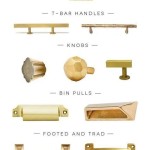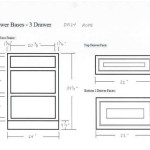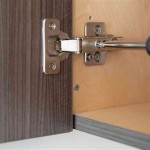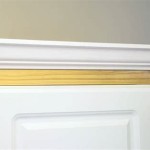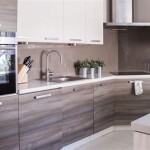Names of Kitchen Cabinets
Kitchen cabinets are a fundamental element of any kitchen, providing essential storage and defining the overall aesthetic. Beyond their functional role, kitchen cabinets also play a crucial part in establishing the kitchen's style and personality. The names assigned to these cabinets often reflect their design, construction, or intended use. Understanding the various names of kitchen cabinets can help homeowners make informed decisions when designing or renovating their kitchens.
Base Cabinets
Base cabinets form the foundation of a kitchen's lower storage system. They typically stand on legs or a plinth, with a standard height of 34.5 inches. Base cabinets provide ample storage for pots, pans, appliances, and other kitchen essentials. They often feature doors, drawers, or a combination of both, offering versatility in organizing and accessing items. Base cabinets can be customized with various features, including adjustable shelves, pull-out drawers, and integrated waste bins.
Within the category of base cabinets, specific names may be used for cabinets with distinct purposes or designs. For example, a "sink base" cabinet is designed to accommodate the kitchen sink and its plumbing. A "corner cabinet" utilizes the often-wasted space in a corner, offering a unique storage solution. "Lazy Susan" cabinets feature a rotating shelf, allowing easy access to items stored in the back of the cabinet.
Wall Cabinets
Wall cabinets complement base cabinets by providing storage above the countertops, maximizing vertical space. They typically hang on the wall using brackets or clips, offering a range of heights and depths. Like base cabinets, wall cabinets can be equipped with doors, drawers, or a combination of both. They are often used to store dishes, glasses, cookware, and other less frequently used items.
Wall cabinets can take on various forms, each with its own name and purpose. "Tall cabinets" offer a significant amount of storage, often extending from the countertop to the ceiling. "Glass-front cabinets" display attractive dishes or glassware, adding a decorative touch to the kitchen. "Open shelving" cabinets forgo doors, providing easy access and a more contemporary look.
Specialty Cabinets
Beyond the standard base and wall cabinets, various specialty cabinets cater to specific needs or enhance the overall kitchen design. "Pantry cabinets" offer a dedicated space for storing dry goods, canned foods, and other non-perishable items. "Island cabinets" are incorporated into kitchen islands, providing storage and seating options. "Mantels" are decorative cabinets usually placed above the range hood or other focal points.
Other specialty cabinets include "spice racks," "wine racks," and "bread drawers," all designed to optimize storage for specific items. These cabinets often feature unique hardware, finishes, or configurations to enhance their functionality and aesthetics.
Cabinet Construction
The construction of kitchen cabinets can vary significantly, influencing their durability, style, and price. Cabinet frames can be made from solid wood, plywood, or MDF (medium-density fiberboard). Cabinet doors can be constructed from various materials, such as wood, glass, laminate, or acrylic. Cabinet hardware, including hinges, pulls, and knobs, also contributes to the overall aesthetic and functionality.
Cabinet Styles
Kitchen cabinet styles are diverse, reflecting different design trends and aesthetic preferences. Popular styles include:
- Traditional: Characterized by ornate details, raised panels, and classic finishes.
- Transitional: Blends traditional elements with modern simplicity, creating a balanced aesthetic.
- Modern: Emphasizes clean lines, minimalist details, and sleek finishes.
- Contemporary: Often features bold colors, unconventional designs, and unique hardware.
- Rustic: Incorporates natural materials, distressed finishes, and handcrafted elements.
The choice of cabinet style significantly impacts the overall look and feel of the kitchen, so careful consideration should be given to the desired aesthetic and personal preferences.

Cabinet Components Mypdh Engineer

Kitchen Cabinet Parts Names Google Search Plans Cabinets Design

Types Of Kitchen Cabinets 101 Guide All You Need To Know

Common Kitchen Design Terminology Explained Bentons Kitchens

Cabinetry Terms With Pictures A Guide To Understanding Kitchens

Kitchen Cabinets And Components That Make Cooking A Dream

Types Of Kitchen Cabinets 101 Guide All You Need To Know

Types Of Kitchen Cabinets 101 Guide All You Need To Know

Pin On Englisch

8 Diffe Types Of Kitchen Cabinets You Ll Love
Related Posts


